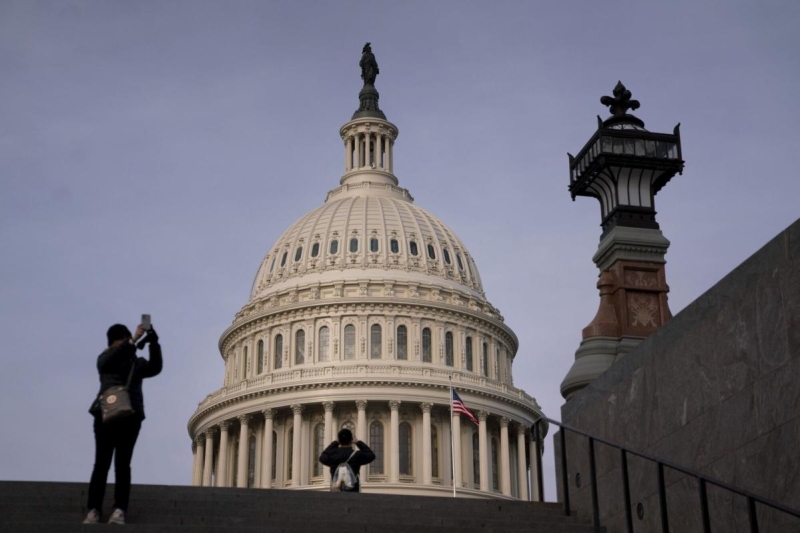
The US Department of Defense (DoD) published a final rule codifying the Cybersecurity Maturity Model Certification (CMMC) Program. The final CMMC rule will apply to all DoD contractors and subcontractors that will process, store, or transmit Federal Contract Information (FCI)[1] or Controlled Unclassified Information (CUI)[2] on contractor information systems. The final CMMC rule builds on the proposed CMMC rule that DoD published in December 2023, which we discussed in depth here.
The final CMMC rule incorporates DoD’s responses to 361 public comments submitted during the comment period and spans more than 140 pages in the Federal Register. Many responses address issues raised in our prior reporting, and DoD generally appears to have been responsive to several concerns raised by the industry. In the coming weeks, we expect to update our separate summaries of CMMC Level 1, Level 2, and Level 3 to reflect the final rule. This OTS summarizes the key changes to the CMMC Program in the final rule.
In Depth
THE CMMC PROGRAM
The final CMMC rule adopts in large part the new Part 170 to Title 32 of the Code of Federal Regulations proposed in 2023. The final rule formally establishes the CMMC Program and defines the security controls applicable to each of the three CMMC levels; establishes processes and procedures for assessing and certifying compliance with CMMC requirements; and defines roles and responsibilities for the Federal Government, contractors, and various third parties for the assessment and certification process. 32 C.F.R. § 170.14 codifies the three CMMC levels outlined in CMMC 2.0, which are summarized as follows in an updated CMMC Model Overview included in Appendix A to the final CMMC rule:
| CMMC Model 2.0 | ||
|---|---|---|
| Model | Assessment | |
| Level 3 | 134 requirements based on NIST SP 800-171 and 800-172 | Triennial government-led assessment and annual affirmation |
| Level 2 | 110 requirements aligned with NIST SP 800-171 | Triennial third-party assessment and annual affirmation; Triennial self-assessment and annual affirmation for select programs |
| Level 1 | 15 requirements | Annual self-assessment and annual affirmation |
See Cybersecurity Maturity Model Certification (CMMC) Model Overview, Version 2.11 – DRAFT at 3-4 (Sept. 2024).
CMMC Level 1 is required for contracts and subcontracts that involve the handling of FCI but not CUI. The security requirements for CMMC Level 1 are those set forth in FAR 52.204-21(b)(1)(i)-(xv), which currently governs contracts involving FCI. Contractors must conduct and report a CMMC Level 1 Self-Assessment in DoD’s Supplier Performance Risk System (SPRS) prior to award of a CMMC Level 1 contract or subcontract. Thereafter, contractors must make an annual affirmation of continued compliance. The final CMMC rule requires compliance with all CMMC Level 1 requirements at the time of the assessment and does not allow contractors to include a Plan of Action and Milestones (POA&M) to comply with unmet requirements in the future.
CMMC Level 2 is required for contracts and subcontracts that involve the handling of CUI. The security requirements for CMMC Level 2 are identical to the requirements in the National Institute of Standards and Technology (NIST) Special Publication (SP) 800-171 Rev 2, and the final CMMC rule adopts the scoring methodology for compliance with those requirements that is currently employed by DFARS 252.204-7020. The final CMMC rule establishes a minimum required score of 88 out of 110 for Conditional Level 2 status with a POA&M. The final CMMC rule allows for certain CMMC Level 2 requirements that are not met at the time of assessment to be addressed through POA&Ms if the contractor meets the minimum required score. A contractor with Conditional status is subject to close out of all POA&Ms, which must be reported in SPRS within 180 days of Conditional status. Conditional status must be achieved prior to the award of any contract subject to CMMC Level 2. If the contractor does not close out all POA&Ms within 180 days of Conditional status, the contractor becomes ineligible for additional awards of CMMC Level 2 contracts.
The final CMMC rule retains the proposed rule’s distinction between CMMC Level 2 Self-Assessments and CMMC Level 2 Certification Assessments. CMMC Level 2 Certification Assessments are issued by CMMC Third-Party Assessment Organizations (C3PAOs) and fulfill one of the primary goals of the CMMC Program: independent verification of contractor compliance with CMMC security requirements. Whether a CMMC Level 2 Self-Assessment or Certification Assessment will apply to a particular contract will be determined by DoD based on the sensitivity of the CUI involved with that contract. When the final CMMC rule is fully implemented, DoD expects that the vast majority of CMMC Level 2 contractors will eventually undergo a Certification Assessment. Under the phased implementation of the CMMC Program discussed below, however, CMMC Level 2 Certification Assessment requirements will not regularly appear in solicitations or contracts until one year after the start of implementation. Contractors that achieved a perfect score with no open POA&Ms on a Defense Contract Management Agency (DCMA) Defense Industrial Base Cybersecurity Assessment Center (DIBCAC) High Assessment under DFARS 252.204-7020 prior to the effective date of the final CMMC rule will be eligible for a CMMC Level 2 Certification for three years from the date of the High Assessment.
CMMC Level 3 applies to contracts that involve the handling of CUI, but for which DoD has determined that additional safeguarding requirements are necessary. The additional CMMC Level 3 requirements consist of 24 requirements from NIST SP 800-172 listed in Table 1 to Section 170.14(c)(4) of the final CMMC rule. These additional CMMC Level 3 requirements include various “Organization-Defined Parameters” that can be used to tailor these requirements to a particular situation. The applicability of CMMC Level 3 requirements will be determined by DoD on a contract-by-contract basis based on the sensitivity of the CUI involved in the performance of that contract.
CMMC Level 3 assessments are performed exclusively by DCMA DIBCAC. The proposed CMMC rule establishes a scoring methodology for assessing compliance with CMMC Level 3 security requirements and allows for Conditional Level 3 status with POA&Ms for unmet requirements, subject to certain limitations and a general requirement that POA&Ms must be closed within 180 days. To achieve CMMC Level 3, contractors will need to have a perfect CMMC Level 2 score (110) and achieve a score of 20 out 24 for the additional CMMC Level 3 controls, with each control worth one point.
PHASED IMPLEMENTATION
The proposed rule contemplated a four-phase implementation over a three-year period, starting with the incorporation of self-assessment levels in Phase 1 through the full incorporation of CMMC requirements in all contracts in Phase 4. The final CMMC rule keeps the phases substantially the same, except it extends the time between Phase 1 and Phase 2 by six months, providing a full year between self-assessment and certification requirements:
- Phase 1 – 0-12 Months: Phase 1 will begin when the proposed DFARS rule implementing CMMC is finalized. Our summary of the proposed DFARS rule can be found here. DoD has stated that it expects the final DFARS rule in “early to mid-2025.” During Phase 1, DoD will include Level 1 Self-Assessment or CMMC Level 2 Self-Assessment requirements as a condition of contract award and may include such requirements as a condition to exercising an option on an existing contract. During Phase 1, DoD may also include CMMC Level 2 Certification Assessment requirements as it deems necessary for applicable solicitations and contracts.
- Phase 2 – 12-24 Months: Phase 2 begins one year after the start date of Phase 1 and will last for one year. During Phase 2, DoD will include CMMC Level 2 Certification Assessment requirements as a condition of contract award for applicable contracts involving CUI and may include such requirements as a condition to exercising an option on an existing contract. During Phase 2, DoD may also include CMMC Level 3 Certification Assessment requirements as it deems necessary for applicable solicitations and contracts.
- Phase 3 – 24-36 Months: Phase 3 begins one year after the start date of Phase 2 and will also last for one year. During Phase 3, DoD intends to include CMMC Level 2 Certification Assessment requirements, not only as a condition of contract award but also as a condition to exercising an option on an existing contract. DoD will also include CMMC Level 3 Certification Assessment requirements for all applicable DoD solicitations and contracts as a condition of contract award, but DoD may delay inclusion of these requirements as a condition to exercising an option as it deems appropriate.
- Phase 4 – 36+ Months: Phase 4 begins one year after the start date of Phase 3 and involves the inclusion of all CMMC Program requirements in all DoD solicitations and contracts, including option periods.
APPLICABILITY TO PERFORMANCE OF DOD CONTRACTS
The DoD has clarified that CMMC only applies to “contract and subcontract awardees that process, store, or transmit information, in performance of the DoD contract, that meets the standards for FCI or CUI on contractor information systems.” 32 C.F.R. § 170.3(a)(1). Given that CMMC will be implemented through a DFARS clause that is included in DoD contracts and subcontracts, the addition of the italicized language does not appear remarkable at first glance. However, it may prove an important qualification for companies that receive FCI and CUI in different circumstances. A company that receives CUI from the Government in the performance of one contract may also receive CUI from another entity independent of any contract or subcontract. For example, several categories of CUI reflect information that is contractor proprietary and, as such, can ordinarily be disclosed by the contractor that owns that information as that contractor deems appropriate. This can occur when teammates for a new opportunity share audit and business systems information for purposes of submitting a proposal, which information may be marked CUI by DoD to protect the proprietary information of the contractor being audited or whose business system was reviewed. The final CMMC rule’s clarification that it only applies to FCI and CUI handled in performance of the DoD contract may help clarify that the CMMC program does not restrict a contractor’s ability to process, store, or transmit its own information.
CMMC STATUS BEGINS ON THE EARLIER OF CONDITIONAL STATUS OR FINAL STATUS
DoD has clarified that although contractors have 180 days to finalize their CMMC certification if they do not originally achieve a passing score, the additional time to finalize does not extend the period for CMMC renewals. Thus, if a contractor’s CMMC certification status was conditionally granted on January 1, 2025, and its final status occurs 180 days later, the contractor’s renewal date will still be three years from the conditional date (January 1, 2028), not the later anniversary of the final status date.
TEMPORARY AND ENDURING EXCEPTIONS
DoD will now allow contractors to obtain permanent and temporary variances that have the status of a “MET” requirement when assessed as part of CMMC. These variances are separate from unmet controls that must be addressed within the contractor’s POA&M and completed within 180 days. The final CMMC rule introduces “enduring exceptions” and “temporary deficiencies,” which are defined as follows: An enduring exception is “a special circumstance or system where remediation and full compliance with CMMC security requirements is not feasible.” The final CMMC rule definition includes examples such as “systems required to replicate the configuration of ‘fielded’ systems, medical devices, test equipment, OT, and IoT.” Enduring exceptions must be documented within a system security plan.
A temporary deficiency is “a condition where remediation of a discovered deficiency is feasible, and a known fix is available or is in process.” Temporary deficiencies would arise after the implementation of a particular security requirement, not during its implementation. The example provided is “FIPS-validated cryptography that requires a patch and the patched version is no longer the validated version.” A temporary deficiency must be documented in an “operational plan of action.”
An operational plan of action is a contractor’s formal documentation of temporary vulnerabilities and temporary deficiencies in the contractor’s implementation of the CMMC security requirements. The operational plan of action documents how these temporary vulnerabilities and deficiencies are to be “mitigated, corrected, or eliminated.”
The proposed DFARS rule requires 72-hour notification for “any lapses in information security or changes in the status of CMMC certification or CMMC self-assessment levels during the performance of the contract.” Proposed DFARS 204.7503(b)(4)). As we pointed out in our summary of the proposed DFARS rule, it does not define “lapses in information security,” but that term appears substantially broader than the term “cyber incident,” which contractors must also report within 72 hours. Because the CMMC rule in C.F.R Title 32 establishes the cybersecurity controls that form the foundation of the CMMC Program, we expected that the final CMMC rule might provide the clarity missing from the proposed DFARS rule; however, the final CMMC rule does not discuss lapses, and it is unclear whether a temporary deficiency is the same as a lapse. The scope of a contractor’s notification obligations under the CMMC Program and the contractor’s DoD contracts and subcontracts therefore remains unclear, particularly whether a contractor must notify the Government every time a measure for complying with a particular CMMC control does not function as planned.
DEFINITION OF SECURITY PROTECTION DATA
In the interim rule, DoD introduced Security Protection Data (SPD) as an undefined term. The final CMMC rule defines SPD as follows:
Security Protection Data (SPD) means data stored or processed by Security Protection Assets (SPA) that are used to protect [a contractor’s] assessed environment. SPD is security relevant information and includes but is not limited to: configuration data required to operate an SPA, log files generated by or ingested by an SPA, data related to the configuration or vulnerability status of in-scope assets, and passwords that grant access to the in-scope environment. (Emphasis added).
In our earlier analysis, we discussed the concern that the ambiguous nature of SPD would make it difficult for contractors to determine which external service providers (ESPs) were in-scope for CMMC. The definition of SPD in the final CMMC rule retains this ambiguity, thus missing an opportunity for further clarity in the use of ESPs.
DIBCAC ASSESSMENTS
For Level 2 and Level 3 CMMC assessments, DoD now reserves the right to conduct a DCMA DIBCAC assessment of any contractor, in addition to other investigative evaluations of an OSA. The results of an investigative DCMA DIBCAC assessment will supersede any preexisting CMMC status, and DoD will update SPRS to show that the OSA is out of compliance. This replaces previous language in the proposed CMMC rule that allowed DoD to merely revoke CMMC status after its investigation. Notably, the final CMMC rule removes the ability to revoke CMMC Level 1 status and does not substitute a DCMA DIBCAC assessment in its place. These changes bring the CMMC program into alignment with the DoD Self-Assessment methodology required in DFARS 252.204-7019/7020.
CSPS AND ESPS
Of significant interest to service providers will be the changes to the requirements for cloud service providers (CSPs) and other ESPs. The final CMMC rule is less prescriptive than the proposed rule with respect to how these service providers fit into the scope of a contractor’s CMMC certification.
First, as before, the final CMMC rule allows the use of CSPs to process, store, or transmit CUI where the CSP is Federal Risk and Authorization Management Program (FedRAMP) Authorized at FedRAMP Moderate baseline or higher, or where the CSP meets FedRAMP Equivalency. The final CMMC rule, however, states that FedRAMP Moderate and FedRAMP Moderate Equivalent determinations will be “in accordance with DoD Policy,” thereby incorporating the DoD Chief Information Officer policy memo on FedRAMP Moderate equivalency issued after the proposed rule. This reference may also allow DoD to change this policy in the future without further notice-and-comment rulemaking.
Second, for ESPs that process, store, or transmit CUI or SPD, CMMC certification is no longer required in advance of the contractor’s certification. Instead, ESPs will be assessed as in-scope for the contractor itself against all of the relevant requirements. This change may relieve pressure not only on ESPs but also on contractors and CMMC C3PAOs if non-contractor ESPs do not need to be at the front of the line for certifications. Although many ESPs with significant Federal contracting customer bases will likely choose to obtain CMMC certification directly, smaller ESPs may choose to support Federal contractor customers in the customer’s own certifications on a case-by-case basis.
Notably, this is a model that many service providers may be familiar with from a different context and standard. In practice, it seems similar to the method for service providers to comply with Payment Card Industry Data Security Standards (PCI DSS). Under PCI DSS, a service provider may obtain its own Attestation of Compliance (AOC) or may participate in the compliance efforts of each merchant it supports. Also, like the PCI DSS model, there now is a requirement to document the roles and responsibilities between ESPs and the contractors. 32 C.F.R. § 170.19(c)(2)(ii) (“documented in the OSA’s SSP and described in the ESP’s service description and customer responsibility matrix (CRM)”).
APPLICABILITY TO SUBCONTRACTORS
The final CMMC rule updates the applicability of the CMMC requirements to subcontractors by incorporating requirements not only for CMMC compliance but also explicitly to flow down CMMC requirements for both CMMC level and assessment type through the supply chain. There is again a helpful clarification that such flow-downs are only required for the performance of a “DoD contract” rather than the prior language that did not specify what types of contracts required flowing down. Id. § 170.23(a).
MISREPRESENTATION AND FALSE CLAIMS ACT RISK
Although the CMMC Level 1 and Level 2 security requirements are the same requirements in FAR 52.204-21 and NIST SP 800-171 that contractors have been required to follow for years, the final CMMC rule will require all contractors that handle FCI and CUI on their systems – even contractors subject to CMMC Level 1 – to make periodic affirmative representations regarding their cybersecurity programs and controls, in addition to the initial assessments and certifications reported in SPRS. Contractors must vet these representations carefully as any potential inaccuracy or ambiguity could generate litigation risk under a variety of criminal and civil laws, including the False Claims Act (FCA).
Since the inception of the CMMC Program, the US Department of Justice (DOJ) has increasingly made cybersecurity an enforcement priority. In 2021, DOJ launched its Civil Cyber-Fraud Initiative, which seeks to leverage DOJ’s expertise in civil fraud enforcement to combat cyber threats to the security of sensitive information and critical systems. Deputy Attorney General Lisa Monaco stated at the time: “We are announcing today that we will use our civil enforcement tools to pursue companies, those who are government contractors who receive federal funds, when they fail to follow required cybersecurity standards — because we know that puts all of us at risk. This is a tool that we have to ensure that taxpayer dollars are used appropriately and guard the public fisc and public trust.” As CMMC is implemented, it will provide the “required cybersecurity standards” that DOJ will seek to enforce and a record of statements of compliance that DOJ will use to leverage the FCA in enforcement.
THE ELEPHANT (STILL) IN THE ROOM
The final CMMC rule, like the proposed rule, does nothing to address the fundamental uncertainty regarding what constitutes CUI and the widespread overmarking of CUI. We continue to see emails from Government officials with CUI markings embedded in signature blocks that automatically attach to every email that official sends out – even when the email is sent to private entities and individuals who do not hold a contract subject to CMMC. Multiple commentators expressed concerns regarding the mismarking and overmarking of CUI, but DoD generally responded by pointing to its existing guidance on CUI marking, without addressing whether that guidance is sufficient or is actually being followed.
CONCLUSION
The final CMMC rule makes several significant changes to the proposed rule, but it largely keeps the structure, content, and format of the proposed rule in place. We will continue to analyze the final CMMC rule, including updating our in-depth analyses of each CMMC certification level, in the weeks to come.
But are we there yet? No, and if you don’t stop asking, DoD will turn this car around! DoD must still finalize the companion DFARS rule before the CMMC can be fully implemented by DoD for new contracts. Once that final DFARS rule is released, we expect a gradual, phased approach that will take three to four years before CMMC is a reality for all Federal prime contractors and subcontractors that store, process, or transmit FCI or CUI in performance of DoD contracts.
© 2024 McDermott Will & Emery by: Daniel P. Graham, Jessica McGahie Sawyer, Brian Long of McDermott Will & Emery For more on the CMMC Program, visit the NLR Consumer Protection section






